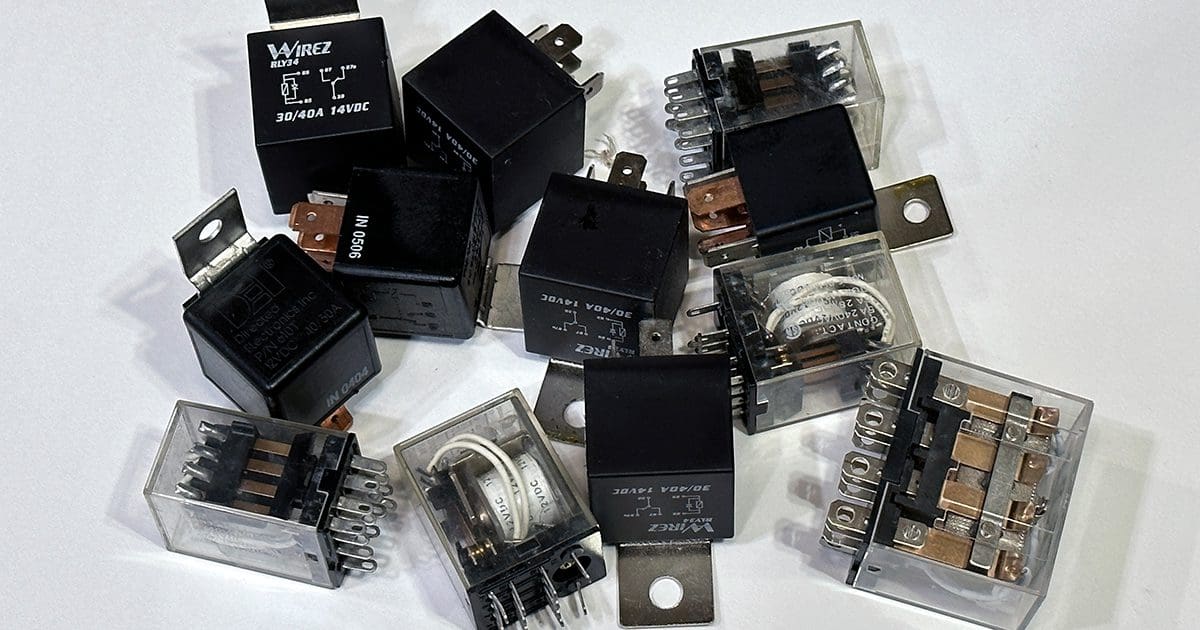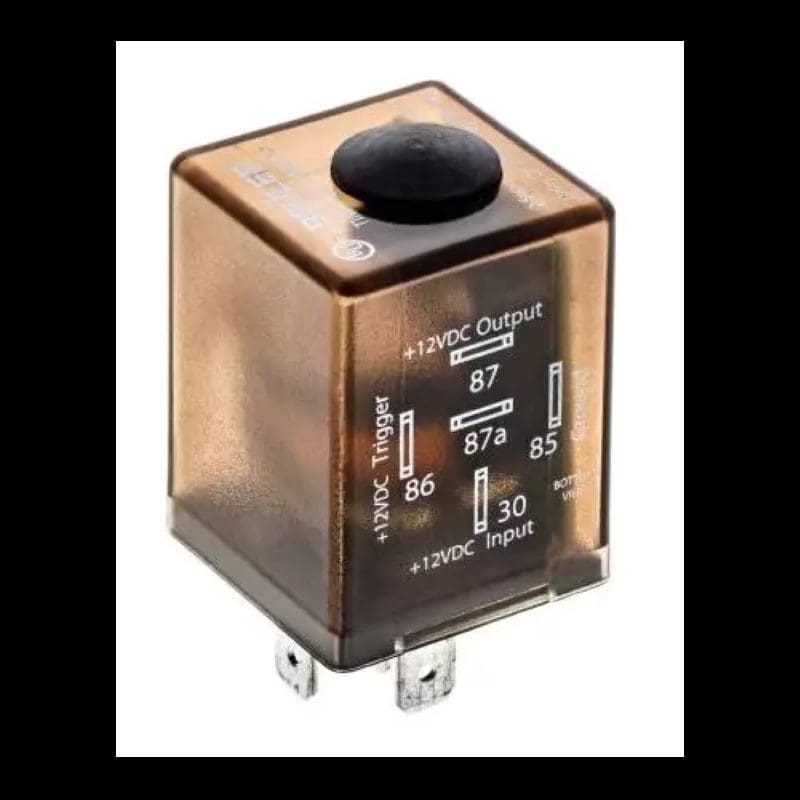If you’ve been around the car audio or vehicle accessory industry for any amount of time, you’ve likely run across a 12-volt relay. A relay is a simple device designed to switch a typically high-current load with a low-current signal. Relays are used in everything from headlight and auxiliary lighting upgrades to power trunk and door lock solenoid installations. Relays can also be used for trigger polarity inversion, motor controls and much more. Let’s look at what a relay is, how it works and its most common application in vehicles.
What Is a 12-volt relay?
Let’s start with the simplest of explanations. A relay has two primary parts: a coil that functions as an electromagnet and a set of contacts. The contacts are like the connections to a switch. When a voltage is applied to the coil, it creates a magnetic field and pulls a small piece of metal toward it. When the metal part moves, it connects the two contacts, effectively turning on the switch.
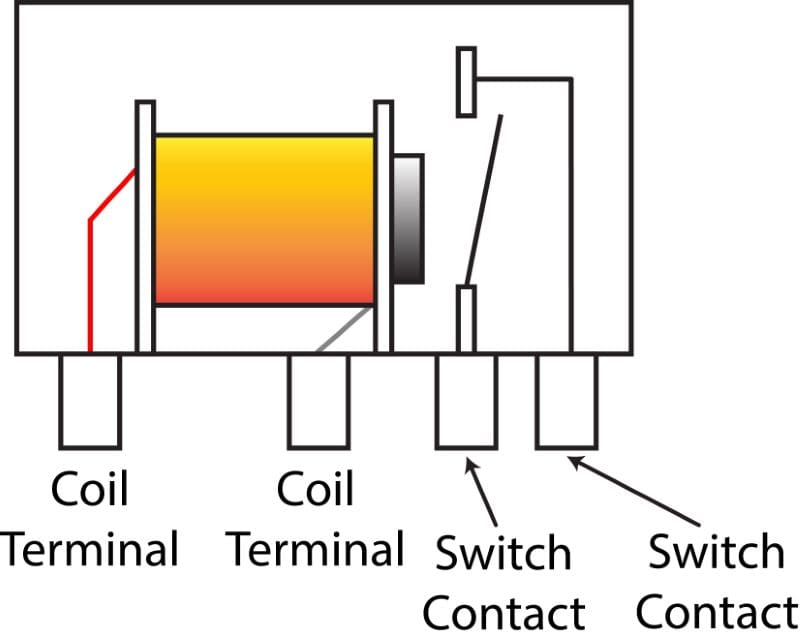
Let’s discuss an example where an installer would want to connect a high-current load to a device with minimal current capabilities. A trunk release solenoid connected to the output of a car alarm or a remote starter would be a common example. The solenoid might draw 10 amps of current for the second or so that it’s enabled. The output of the alarm system might only be able to provide 400 milliamps of current. Powering the relay from the alarm brain isn’t going to work. This is where we need a relay.
The output of the alarm brain will connect to one side of the relay. If the output is negative (-), then we connect it to the ground side of the coil and feed a constant +12V signal to the other side. When the output of the alarm is activated, it provides a ground to the coil allowing current to flow and a magnetic field to be created. This field pulls the contact closed.
On the contact side, the solenoid could be connected directly to the ground, and the fused power wire from the battery would connect to the contacts of the relay. When the contacts are closed, current from the battery is allowed to flow through the solenoid and pop the trunk.
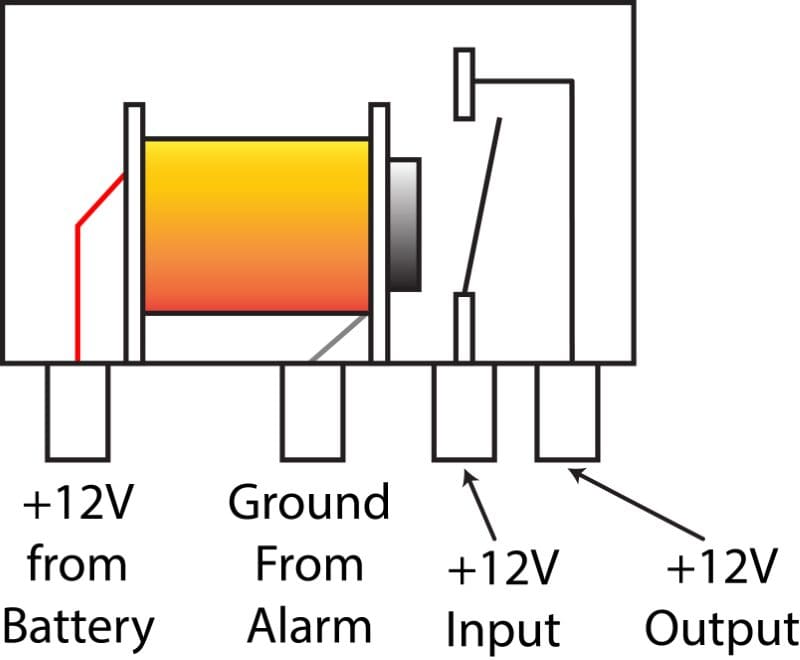
Common Automotive 12-Volt Relays
The most popular relays used in cars and trucks have five terminals instead of four. There are two terminals for the coil, and one each for the input contact terminal and the output contact terminal. A fifth terminal is connected to the input when the relay coil is not activated. This is called the normally closed connection. The switched connection or output is called the normally open.
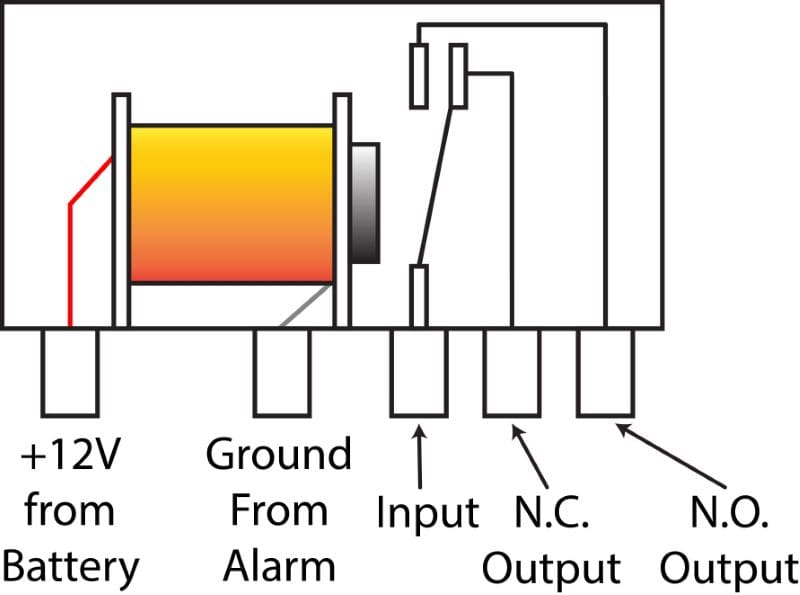
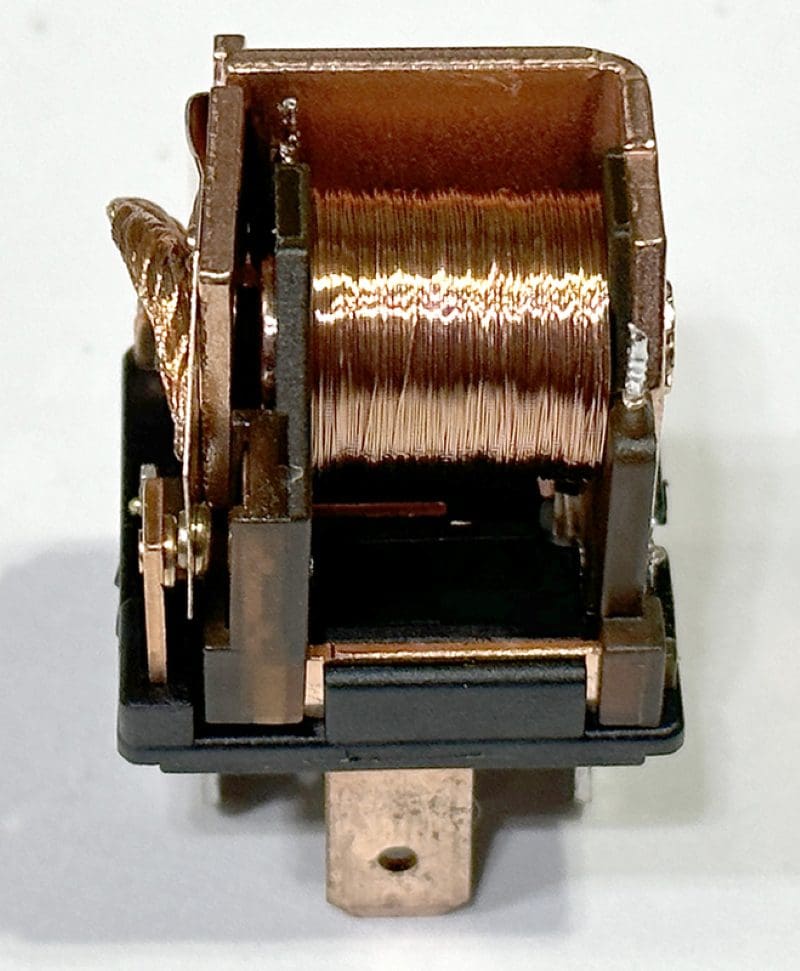
The above relay is also called an SPDT relay. The letters stand for Single Pole, Double Throw. The conventional four-terminal relay would be an SPST, or Single-Pole, Single-Throw. Four-Pole, Double-Throw (4PDT) relays are common components in audio display switching systems.
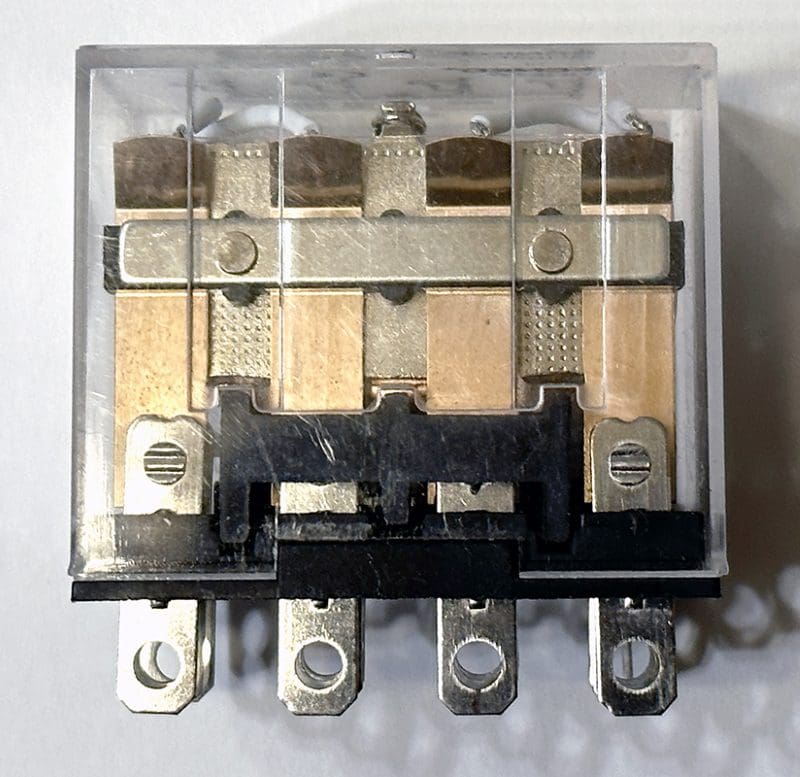
In the case of the four-terminal relay, we talk about using the device as a remotely controlled switch. The five-terminal relay can also be a switch or disconnect a circuit when it receives the control signal. This configuration is used for many car alarm and remote starter installations as an anti-theft device. The start wire from the key is interrupted when the alarm is activated, preventing the vehicle from starting.
Most relays used in automotive applications have a set of standard terminal labels on them. The terminals labeled 85 and 86 are the connections to the coil. Terminal 30 is the switched contact input. Terminal 87a is the normally closed output, and terminal 87 is the normally open output.
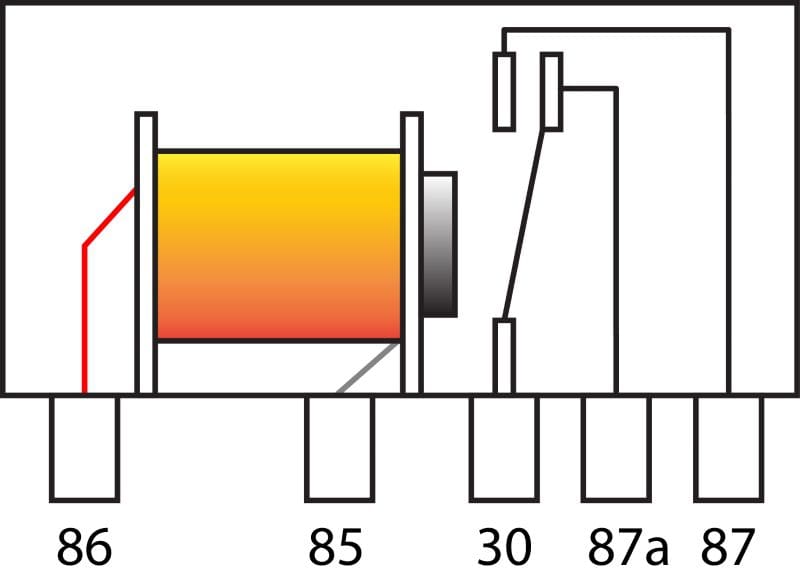
Relay Contacts Don’t Care About Signals
An important feature of a relay is that the contact doesn’t care what signal it is passing. It could be 12 volts from the battery or a ground connection. It could also be a data signal on a CAN bus wire or an AC from the output of a radio or amplifier. So long as the relay is designed to handle the current and voltages applied to the contact terminals, it can pass almost anything.
Intelligent Relays
So far, the relays we’ve discussed change their contact state only when a signal is applied to the coil. Another type of relay called a latching relay closes the contacts when a signal is applied to the coil but keeps them closed until the control signal is removed and reapplied. If you wanted to turn on a set of fog lights with a momentary switch or button, your installer could use a latching relay. Pressing the button once would turn on the lights. Pressing the button again would turn the lights back off.
Relays are also available with integrated timers. These are available with two- to 180-second delays in the relay turning on or off, depending on the model you choose. The delay-on relays might be ideal in an audio system where the source unit or a processor produces an unwanted noise during the start-up process. Delaying the amplifiers from turning on by a few seconds might protect the speakers in this application.
If you work on cars or trucks integrating upgrades or repairs, having a thorough understanding of how 12-volt relays operate is crucial. The applications for these devices extend well beyond switching high-current loads to include simple logic circuits and dozens of configurations for remote car starters and car alarm systems. Your local mobile enhancement retailer will let you know if the audio system or accessory upgrade you have planned for your vehicle may require the addition of a relay or two to ensure that it functions reliably.
